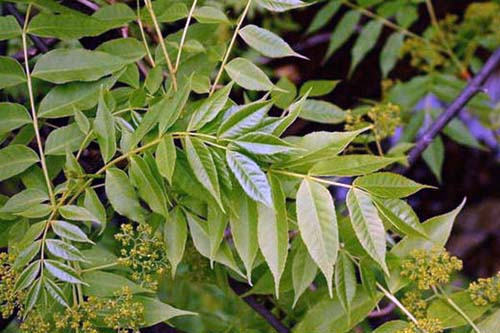The source is from the mature fruit of Melia toosendan Sieb. et Zucc., family Meliaceae. The medicinal material is produced in most parts of China, and that produced in Sichuan is the best. It is collected in winter and dried in the sun. When used, it is broken and the crude form or the one stir-baked with bran is used.
Medicinal Properties: Bitter in flavor, cold in nature, mildly toxic and attributive to the liver, stomach, small intestine and bladder meridians.
Actions: Circulate qi to relieve pain, kill parasites and treat tinea.

Application
It is used for stagnation of liver-qi or hepatic qi attacking the stomach manifested as hypochondriac pain, stomachache, abdominal pain and hernia, and is more suitable for that with fever. It is usually combined with Yanhusuo (Rhizoma Corydalis), such as Jinlingzi San (Powder); for hernia of cold type with low abdominal pain, it is combined with Xiaohuixiang (Fructus Foeniculi), Wuzhuyu (Fructus Evodiae), and Muxiang (Radix Aucklandiae), etc..
2. For ascariasis with abdominal pain, it is usually used together with Binglang (Semen Arecae), Shijunzi (Fructus Quisqualis ) , etc..
In addition, it can also be used externally for tinea capitis. It can be baked alone till it turns brown, ground into powder, mixed with lard or sesame oil and applied to the local area.

Usageand Dosage:
3 - 10 g is used in decoction for oral use and just right amount for external use.
Notes:
Since the herb is toxic, overdosage or constant taking of it must be avoided. Besides, it is contraindicated for cold-deficiency type of the spleen and stomach.







